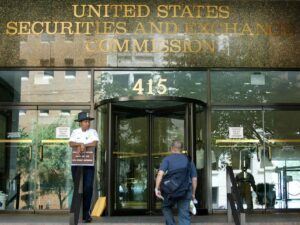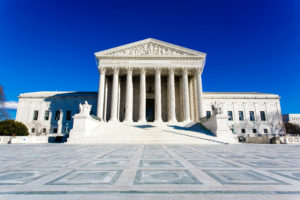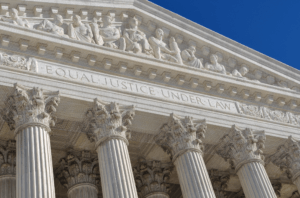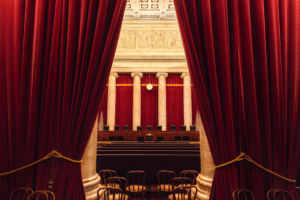Admin law, legitimacy, and the Roberts Court
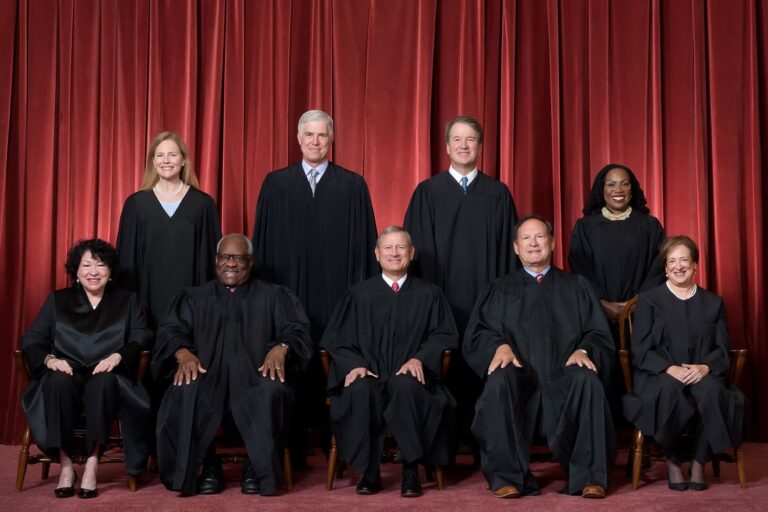
Lately, the Supreme Court has rewritten the textbooks for the study of regulation, known as administrative law.
Most scholars ascribe the legal upheaval to politics, period. They say the Court’s conservative majority is shaping the law in line with its “anti-regulatory” beliefs.
The Justices’ values are important, to be sure, but the critics miss a crucial confounding variable. Regulation transformed just before the Court’s political center shifted right. Leading up to (and through) the Roberts era, agencies pushed the envelope of their authority with newfangled means and strategies. It was these troubling regulatory advances to which the Court responded in blockbusters like Loper Bright Enterprises v. Raimondo, SEC v. Jarkesy, and West Virginia v. EPA.
Viewed in its full light, the Court’s recent admin law jurisprudence takes on a more flattering perspective. Instead of “judicial aggrandizement,” these decisions are more properly conceptualized as “constitutional checks” on a worrisome concentration of authority in the Executive Branch.
Loper Bright Enterprises v. Raimondo
Let’s start with last term’s Loper Bright v. Raimondo. In this seismic case, the Court abandoned Chevron deference, or binding judicial respect for “permissible” agency interpretations of their own implied power. Since the 1980s, Chevron had served as the doctrinal equivalent of putting the fox in charge of the henhouse, but Loper Bright put an end to that.
Loper Bright involved a rule requiring fishing vessels to carry and pay for federal monitors. It is the rare administrative law case whose facts are known to many, because the disputed rule was featured (most negatively) in the Academy Award-winning film CODA. In the movie, as in real life, the regulation posed an existential threat to family fishing businesses. The lower courts relied on the Chevron framework to sustain the agency’s rule. On certiorari, the Supreme Court overruled Chevron, while vacating the decisions below and remanding to the circuit courts to interpret the law without a deferential posture.
Many, perhaps most, academics claim that Loper Bright is the work of six Republican policymakers in robes. According to Professor Kate Shaw in the New York Times, the decision’s “core premise is one of judicial primacy.” In the New York Review of Books, Professor David Cole similarly framed Loper Bright as a partisan “power grab.” Professor Rachel Barkow argued much the same in a New York Magazine piece whose title says it all: “The Imperial Court.”
Maybe the critics are correct, and Loper is animated by ulterior motives. Still, there is another perspective, one that is rooted more in regulatory history and less in cynicism. Under this other telling, Chevron evolved over time into a threat to the constitutional separation of powers.
Forty years ago, the doctrine began as an uncontroversial presumption that agencies have “interstitial” authority to “fill in the details” of their enabling acts. Justice John Paul Stevens, who authored Chevron, thought he was merely restating the law. The problem was that his opinion included a “two step” formulation that, on its face, indicated that the government should win whenever the statute is silent or ambiguous. Seizing upon this language, government lawyers commenced an “unrelenting campaign to make Chevron the universal standard for judicial review of agency interpretations of law.” After the doctrine took hold, lower courts took to “reflexive deference,” without meaningfully engaging in the statutory text. This judicial permissiveness, in turn, invited regulators to treat Chevron as an independent source of authority, rather than as a mandate to “fill in the details.” By the late 1990s, it seemed that agencies often started their regulatory planning at Chevron “step two,” and then worked backwards to the statutory text. Thus, the doctrine facilitated rampant “executive lawmaking,” to borrow phrasing from a recent and insightful National Affairs article by AEI scholar (and former acting-Attorney General) Jeffrey Rosen.
Experience is the best teacher. There is a reason Justice Anthony Kennedy, in one of his final opinions, expressed skepticism about what Chevron had become. Justice Antonin Scalia seemingly shared such second thoughts before his untimely passing, even though he was once a staunch proponent of the Chevron principle. Over time, the doctrine changed in a fundamental fashion, bringing about a new mode of administrative authority.
SEC v. Jarkesy
Let’s turn next to SEC v. Jarkesy, another seminal administrative law case from last term. In Jarkesy, the Court held that the Seventh Amendment jury right attaches to a defendant in an SEC enforcement action seeking a $300,000 penalty for securities fraud. Jarkesy casts constitutional doubt on many agencies’ authority to use their in-house courts to impose big money penalties.
Writing in The Atlantic, Professor Noah Rosenblum denigrated the decision as “a dangerous act of judicial aggrandizement,” one that “continues the Court’s attack on the federal government’s capacity to do many of its most basic jobs.” Professor Eric Segall told The Intercept that Jarkesy and Loper Bright evince “a pattern of the Supreme Court taking power for the federal judiciary.” On the Strict Scrutiny podcast, Professor Leah Litman said these decisions reveal a conservative “supermajority” saying, “we can do whatever the f#@k we want.”
To hear the critics tell it, Jarkesy is all about the Justices’ lust for power. At face value, these charges seem overwrought, given we’re talking about the individual right to a jury trial. As with Loper Bright, the critics elide important historical context, which provides a more plausible impetus for Jarkesy. Here, the key development was the onset of pocketbook punishments.
For most of the twentieth century, domestic regulatory agencies could pursue two types of nonmonetary punishment in their in-house courts: 1) suspension or revocation of a government-issued license; or 2) a cease-and-desist order. Congress didn’t authorize the first money penalty until 1970, which the Supreme Court ultimately upheld in 1977. Thereafter, Congress made money penalties widely available to agency adjudicators. Over the next three decades, Congress passed 172 of these authorizations. These penalties started small, but Congress amended them upwards another 72 times, resulting in significant penalty authority. The SEC’s maximum penalty, for example, is set at $1,152,314 per violation. In 2022, agencies sought civil money penalties in 70% of enforcement proceedings, resulting in almost $6.9 billion in exactions. In a span of a few decades, therefore, money penalties became the leading enforcement sanction in administrative proceedings.
Although agencies have imposed individualized sanctions in their in-house tribunals since the dawn of the administrative state, the stakes changed dramatically in the decades leading up to the Roberts Court. It is only relatively recently that agencies came into the power to seek millions of dollars in civil money penalties in their in-house courts, where the agency acts as prosecutor, judge, and jury. In Jarkesy, for example, the Court was reviewing a civil money penalty that dates only to 2010.
Major Questions Doctrine
In a 2022 decision, West Virginia v. EPA, the Court announced the arrival of the major questions doctrine. Under this interpretive principle, courts require a “clear” statutory basis for “major” regulations. The doctrine is based on the presumption that Congress legislates in lucid terms when delegating matters of “vast economic and political significance.” It has been used in recent years to stop a comprehensive eviction moratorium, a nationwide vaccine mandate for workplaces, and nearly $430 billion in student loan debt cancellation.
If you’ve read this far, the criticisms will ring familiar. According to Professor Ronald Levin, conservative Justices in the majority are “writing their ideological preferences into the fabric of administrative law,” which raises “serious concerns about legitimacy.” Similarly, Professor Cary Coglianese portrayed the doctrine as “a judicial power grab” that will “sow distrust in the Supreme Court as a judicial institution.”
Yet again, there is an alternative perspective, based on recent regulatory history, and this other vantage puts the Court in a very different light.
For much of the Twentieth Century, powerful congressional committees vied with executive officers for control over administrative agencies; however, by the 1990s, a diminished Congress relinquished its co-management role over administrative policymaking. With the Legislative Branch out of the picture, the Executive Branch tightened its grip over regulatory policymaking. As a result, we live today in what scholars call an “era of presidential administration,” meaning that regulation is an extension of the president’s political agenda. Rather than working through Congress, presidents now advance their “major” priorities through administrative means. A template emerged. Using executive orders, the president directs an agency to achieve a far-reaching policy based on existing statutory authority; then, the resultant rulemaking is managed out of the White House. One finds this “pen and phone” pattern behind every “major questions” case.
The upshot is that “major” rules are only as old as our present era of presidential administration, which dates to the late 1990s. To check the worst excesses of this new regulatory paradigm, the Supreme Court turned to the major questions doctrine.
Constitutional Dynamism
When one branch takes on a surfeit of power, the others are supposed to react—and that’s by design. Through constitutional structure, the Founders sought to prevent a concentration of authority, which they believed to be the “definition of despotic government.” The whole idea is to better protect liberty.
Of course, the Constitution does not define the separation of powers. Instead, the boundaries among the branches of government are established by their actions and interactions. Within this perpetual interplay, the judiciary might be the least dangerous branch, but it’s not a doormat. Instead, the courts’ role is to “ascertain” the Constitution’s meaning, “as well as the meaning of any particular act proceeding from the legislative body,” and declare “void” any “act of a delegated authority, contrary to the tenor of the commission under which it is exercised.”
This structural dynamism underlies the decisions discussed in this post. We must not blind ourselves—as do the Court’s critics—to the fact that the Executive Branch had accrued an alarming concentration of power by the second decade of the twenty-first century. In minority opinions, oral arguments, and holdings, the “conservative” Justices have expressed a well-justified concern with the modern trend to evermore administrative power.
Inter-branch balancing, per se, is not an independent basis for courts to check the political branches. On the other hand, an imbalance among the separated powers naturally engenders legal challenges—the Founders, after all, believed that a concentration of authority led to arbitrary government. And, to the extent values factor into the Justices’ thinking, there is no reason why “anti-regulatory” should be coterminous with “Republican party” and not “constitutional check.”




